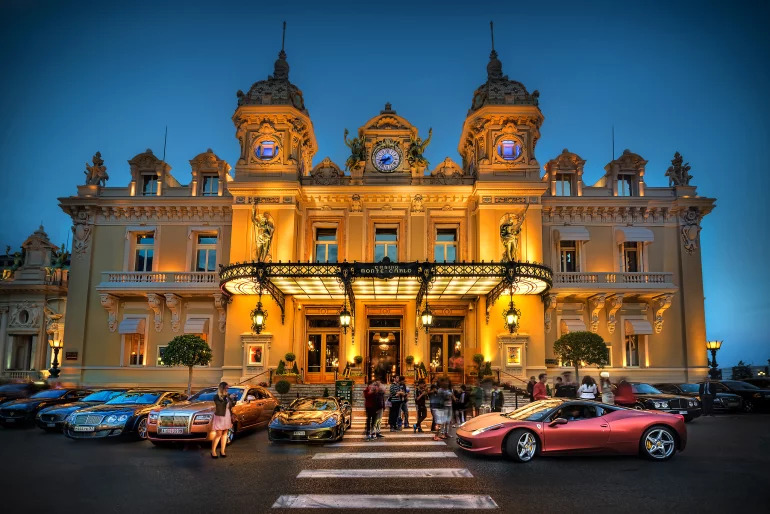
Casino Monte Carlo in Monaco: A Legacy of Elegance and Opulence
The Casino de Monte-Carlo, located in the heart of Monaco, is synonymous with luxury, grandeur, and high-stakes gaming. Revered globally as a symbol of sophistication, this iconic casino draws visitors from around the world, offering an unmatched gaming experience amidst stunning architecture and a rich historical background. Let’s explore the fascinating history, the famous clients who have graced its halls, the casino’s remarkable architectural design, and the rules that govern its esteemed gaming floors.
History of Monte Carlo Casino
Founded in 1863 by François Blanc under the direction of Princess Caroline, the Casino de Monte-Carlo was created with the intent of revitalizing Monaco’s economy. The principality, which had been facing financial struggles, found salvation in the establishment of this opulent gaming house. François Blanc, a visionary entrepreneur, is credited with transforming the idea of a simple gambling house into a luxurious destination, setting new standards for the world of gaming.
The casino quickly became the cornerstone of Monaco’s economy and a destination for Europe’s elite. Over the years, Monte Carlo has weathered two world wars and a fluctuating global economy, yet it remains a jewel in the crown of Monaco, attracting both high-rollers and casual tourists seeking a taste of luxury.
Famous Clients of Monte Carlo Casino
Throughout its storied history, the Casino de Monte-Carlo has seen numerous high-profile figures, from royalty to celebrities, grace its gaming floors. Legendary personalities like Winston Churchill, who was known for his love of roulette, frequently visited the casino. In more recent times, figures such as Elton John and Roger Moore, who famously played James Bond in Casino Royale, have been known to enjoy the casino’s luxurious ambiance.
The casino’s allure has also attracted fictional characters, most notably James Bond. The Casino de Monte-Carlo has been featured in various Bond films, including GoldenEye, where Pierce Brosnan’s 007 character immerses himself in high-stakes games, reinforcing the casino’s glamorous and adventurous reputation.

Architecture of Monte Carlo Casino
The architectural splendor of the Casino de Monte-Carlo is one of its most distinguishing features. Designed by the renowned architect Charles Garnier, who also designed the Paris Opera House, the building is an exquisite example of Belle Époque architecture. The casino’s stunning façade is adorned with columns, balustrades, and sculptures, evoking a sense of grandeur that immediately captivates visitors.
Inside, the casino boasts lavish halls adorned with chandeliers, marble columns, and richly detailed frescoes. The gaming rooms are equally extravagant, with gold accents, luxurious fabrics, and intricate woodwork that create an atmosphere of opulence. The Salle Garnier, the opera house within the casino, is also a masterpiece of architectural and artistic design, hosting world-class performances in an intimate, sumptuous setting.
Rules of Monte Carlo Casino
The Casino de Monte-Carlo operates with a set of strict rules and regulations designed to maintain the integrity of its games and ensure the comfort of its guests. First and foremost, entry is restricted to individuals over the age of 18, and citizens of Monaco are prohibited from gambling at the casino, a law established by Prince Charles III to protect the local population.
Dress codes are enforced to preserve the casino’s elegant atmosphere, with visitors required to wear formal or semi-formal attire in the gaming rooms. Additionally, photography and videography are strictly prohibited within the casino to ensure the privacy and discretion of its patrons.
The casino offers a variety of games, including roulette, blackjack, and baccarat, as well as slot machines. Each game follows strict regulations to ensure fairness, and the casino staff, renowned for their professionalism, uphold the high standards of service expected by its discerning clientele.
